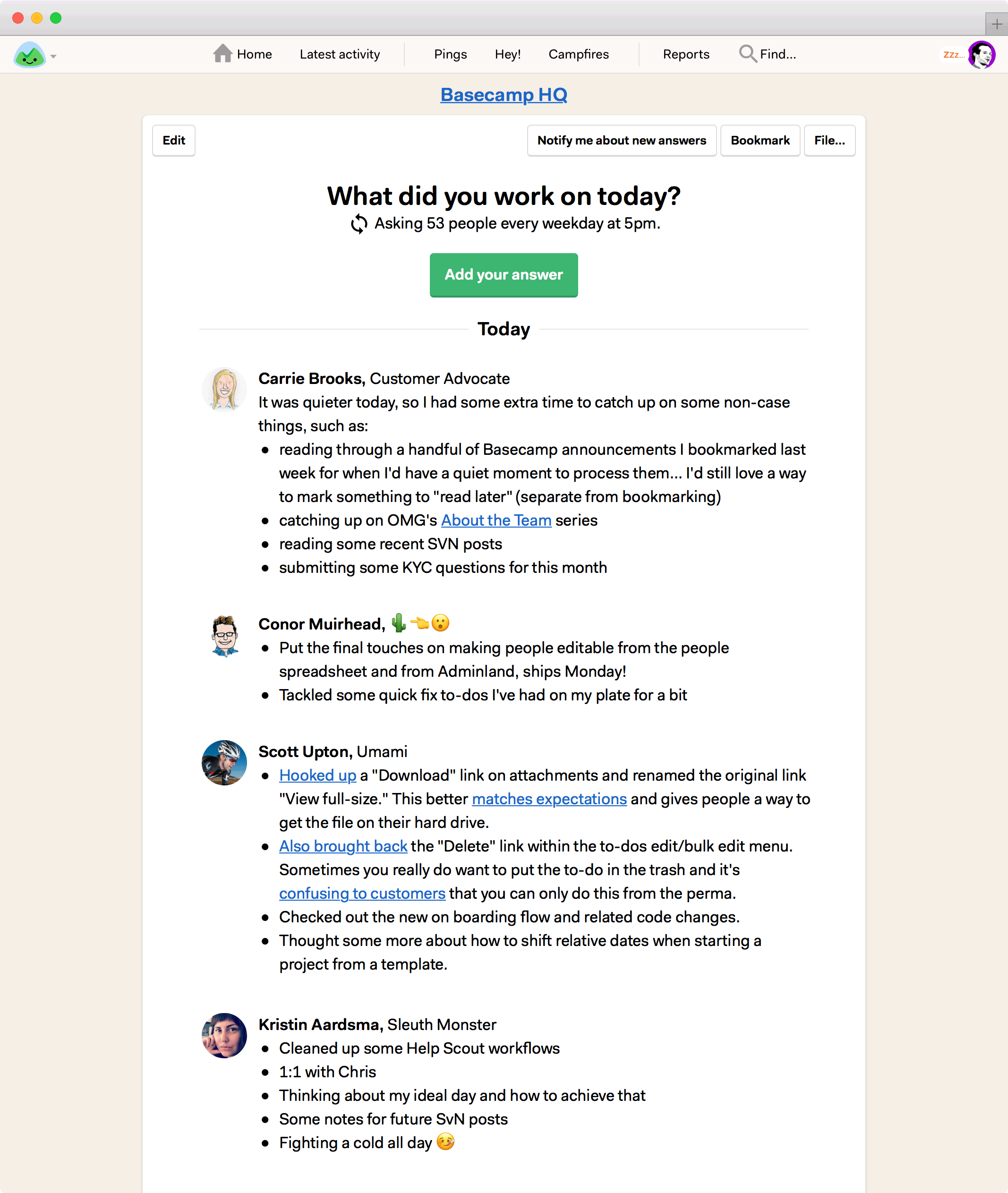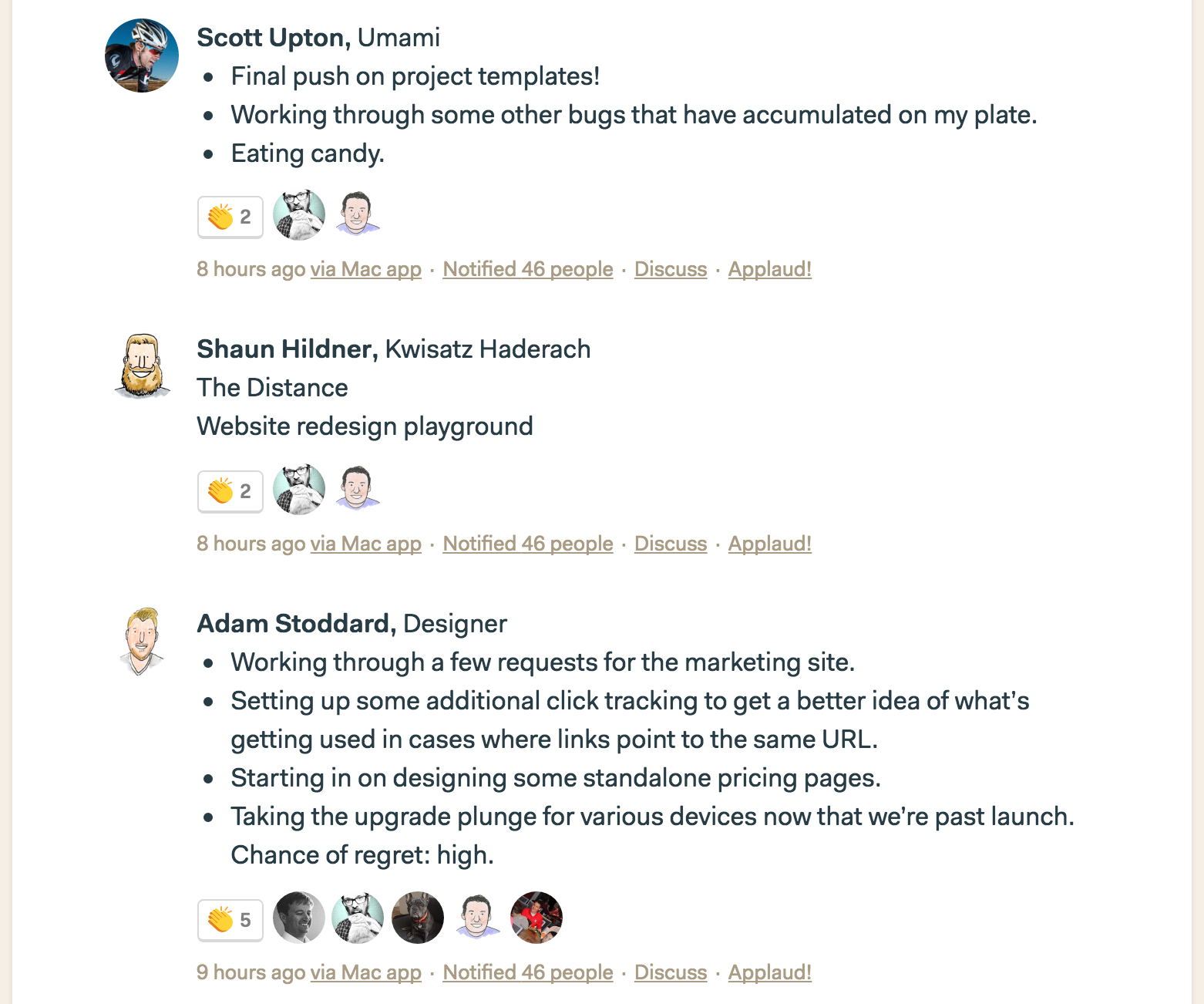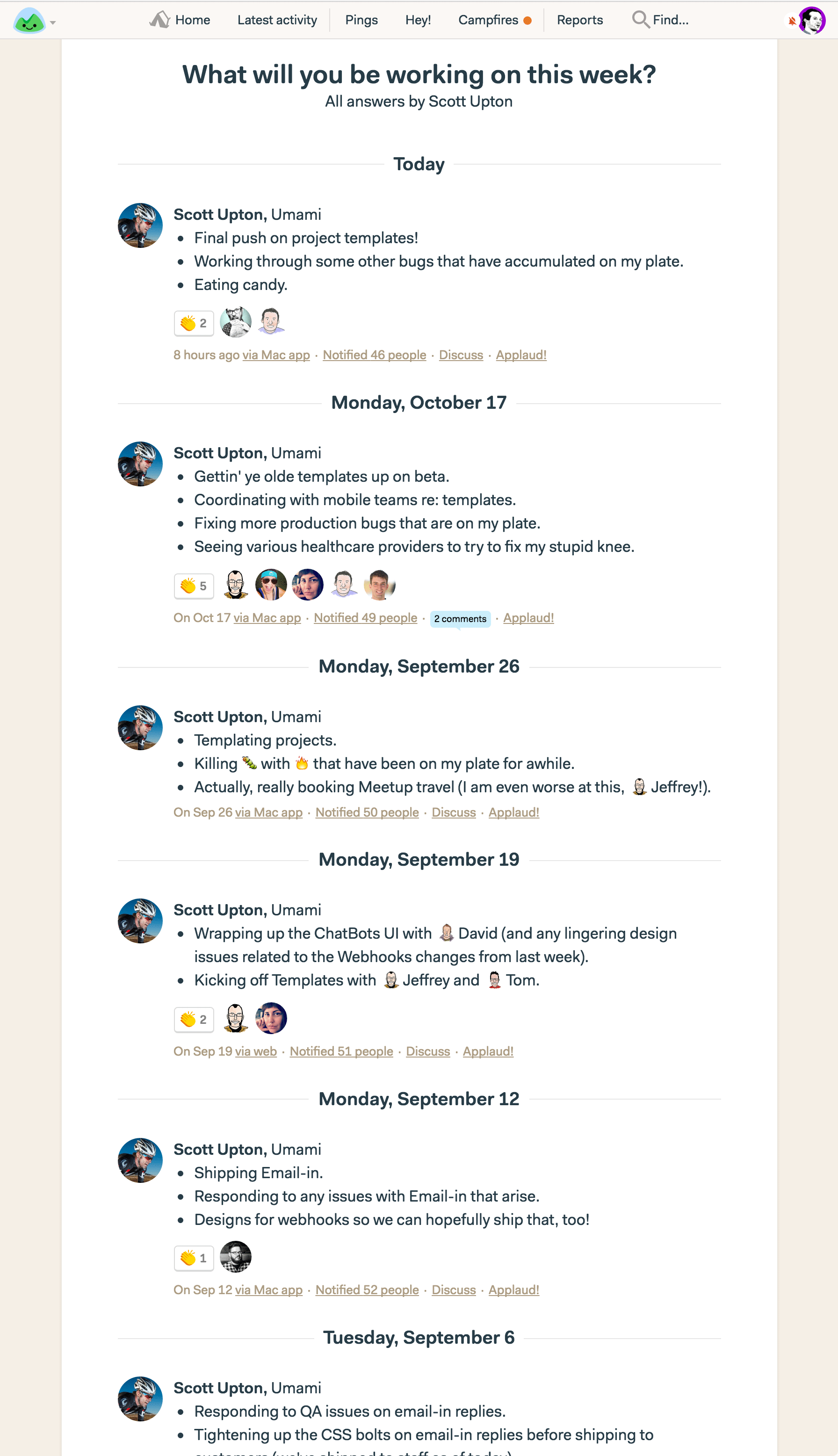Status meetings are the worst kinds of meetings. Eliminate them and you’ll actually know more, save a pile of money, and regain dozens of hours a month.
A status meeting — sometimes called a stand-up — is a meeting where a bunch of people get together in a room (or virtually via video chat) and speak one at a time. Someone gets the floor, they fill the group in on something that’s going on, then they cede the floor to someone else who does the same thing. One after another, around they go.
It’s hard to come up with a bigger waste of money, time, or attention than status meetings.
First, there’s no such thing as a one hour meeting.
Basic meeting math applies to all meetings: The time blocked off doesn’t equal actual time spent. The time spent is the time blocked off multiplied by the number of people in the meeting. So, a one hour meeting with 6 people is a six hour meeting. A 15 minute minute meeting with 9 people is a two-and-a-quarter-hour meeting. Even a 15 minute meeting with 4 people costs an hour of collective work time.
Factor in salaries and hourly rates, and meetings get expensive quick. Add in attention diverted and the cost goes up even more. Was that last meeting you had worth it? I’d almost certainly bet it wasn’t. Still not convinced? How would you feel if you had to regularly expense $1200 so you could “tell a few teammates something”. Think that would go over well?
Right now is almost always the wrong time
Status meetings are about updating people right now. But most status updates have nothing to do with right now. Does everyone really need to hear this information at the exact same time? I’d bet not.
In theory, telling everyone something in person at the same time may feel efficient, but in practice it’s just the opposite. You’re making everyone be present, which means they can’t be doing something else more valuable. You are pulling people away from their work not to work. No wonder people feel like they can’t get work done at work.
If someone read the information 90 minutes later, vs. heard it right in the moment, I bet all would be fine. Same with someone who reads it 3 hours later. Or even later than that.
If the information disseminated isn’t required to be absorbed by everyone at the exact same time, then let people absorb it when they’re ready to read it, vs. when you’re ready to tell them. That’s the enlightened way — don’t take people’s attention, give people back their attention so they can spend it in much more profitable ways.
Your now ain’t my now
Right now may be relevant for one person, but it’s increasingly unlikely that it’s the right time for for two, three, or ten at the same time. People should be occupied with their work, and everyone’s working on different things. So how can it be that everyone’s ready to break at the exact same time to hear something that doesn’t need to be said to everyone at once? It’s only possible when you force people to stop what they’re doing all at the same time. Is forcing people to stop, or postponing their start, really worth what they’re about to hear? You may still want to say it right now, but they can almost certainly hear it later.
When you begin to understand this, everything starts to change. This perspective alone can change your business in profound ways.
Write it up rather than say it out loud
Ok so what instead? Here’s what we do: We write up status reports rather than say them out loud. We post them to Basecamp so they have a permanent home where everyone can see them whenever they’re ready. People can then post follow up questions in-context right below the write-up so the entire conversation stays together, forever. It’s as simple as that.
This is how we avoid status meetings, save ourselves dozens of hours a week, get a whole lot more done than most companies our size, and have people go home at 5 and take the weekends off. Yes, it all begins with eliminating regular meetings.
When something’s written up, people can absorb it on their own time when they have the time. It’s even better for remote teams where timezones don’t overlap. Asynchronous communication like this is the secret to being efficient in groups. Real-time is not. Real-time encourages distraction, asynchronous encourages focus.
Our patterns: How we replace meetings
Basecamp 3’s “Automatic Check-ins” feature takes the place of weekly status/stand-up meetings and daily status updates here at Basecamp. We communicate a ton of detail about what’s going on across the company without ever having to pull someone into a physical room, chat room, or any other room.
“What did you work on today?” every day
At 5pm, Basecamp automatically asks everyone our company “What did you work on today?” And when people have a free moment, they can post their answer back to Basecamp. The answers are visible to everyone in the company so everyone across the company knows what’s happening without having to follow dozens of separate projects or conversations.

“What do you plan on working on this week?” every Monday morning
Here are some answers to “What do you plan on working on this week?”.

And there’s a great secret feature in Basecamp 3’s Automatic Check-ins. If you click a person’s name, you can see all of their answers to a particular question going back in time. On a single page, here are all of Scott’s answers to what he was planning on working on in a given week:

It’s easy to knock out meetings and regain a bunch of time. You just have to start small and build from there. Start knocking out one a month. See how it goes. Then one a week, and so on. Ease into it and you’ll see the benefits mount. Soon enough you won’t look back.
Helping you eliminate wasteful meetings is just one of the ways Basecamp 3 is built to help small businesses run better. Here are over 1,000 other ways…


But nobody wants to spend a half hour reading updates when they could meet and talk about them in a dynamic way in 15 min. Totally disagree with the fundamental idea of your article. Totally eliminating any in person interaction is inefficient and ineffective. Reminds me of open floor concepts. A big mistake.